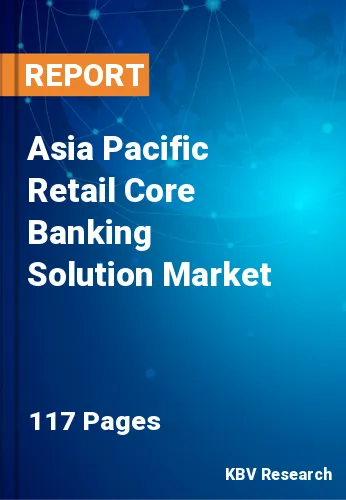The Asia Pacific Retail Core Banking Solution Market would witness market growth of 10.3% CAGR during the forecast period (2022-2028).
Giving consumers with debit and credit cards convenient access to services is one of the critical advantages of IoT in the banking sector. Banks can examine how frequently A.T.M. kiosks are used in particular locations and adjust the location of A.T.M. installations accordingly. Banks can leverage IoT data to provide kiosks and improve client availability in addition to A.T.M.s to deliver on-demand services directly to customers.
Financial institutions can discover their customers' business demands and value chains and obtain customer insights by using the customer data made available by IoT. Such client data can help banks offer value-added services, financial support, and tailored goods to create favorable circumstances for both sides. When it refers to retail banking, the industry is incredibly promising. Customers who bank using smart speakers enjoy the convenience of giving voice commands rather than staring at a mobile device.
For example, Capital One in the U.S. allows consumers to pay their bills using Alexa from Amazon. By integrating its API via Google Home, U.K. challenger bank Starling enables customers to make payments and check their balances using voice commands. In addition, NatWest and Google Assistant in 2019 tested a voice banking function. Customers could use the feature to learn about their account balances, the most recent and pending transactions, and it was interoperable with the Google Home smart speaker.
The developed metropolis of Hong Kong has a high percentage of internet and mobile phone access, which provides a solid basis for the city's fintech ecosystem. According to Invest Hong Kong, there are 600 start-ups and fintech businesses nationwide. The city is among the top five developed markets in the world for consumer fintech adoption. Insurtech, blockchain, data analytics, Know Your Customer (KYC) and digital identification utilities, wealthtech, digital payments, securities settlement, and other fintech and banking opportunities abound in Hong Kong.
The China market dominated the Asia Pacific Retail Core Banking Solution Market by Country in 2021; thereby, achieving a market value of $639.1 million by 2028. The Japan market is registering a CAGR of 9.7% during (2022 - 2028). Additionally, The India market would showcase a CAGR of 11% during (2022 - 2028).
Based on Component, the market is segmented into Solution (Without Services) and Services. Based on Deployment Mode, the market is segmented into Cloud and On-premise. Based on Organization Size, the market is segmented into Large Enterprises and SMEs. Based on Application, the market is segmented into Regulatory Compliance, Risk Management, Digital Banking, and Others. Based on countries, the market is segmented into China, Japan, India, South Korea, Singapore, Malaysia, and Rest of Asia Pacific.
Free Valuable Insights: The Worldwide Retail Core Banking Solution Market is Projected to reach USD 7.4 Billion by 2028, at a CAGR of 9.8%
The market research report covers the analysis of key stake holders of the market. Key companies profiled in the report include Oracle Corporation, Fiserv, Inc., Temenos AG, Tata Consultancy Services Limited, SAP SE, Infosys Limited, Fidelity National Information Services, Inc. (FIS), Kiya.ai, Jack Henry & Associates, Inc. and Silverlake Axis Ltd.
By Component
By Deployment Mode
By Organization Size
By Application
By Country
Our team of dedicated experts can provide you with attractive expansion opportunities for your business.

